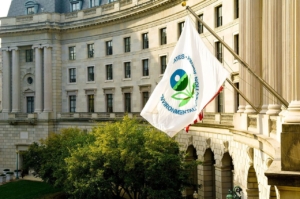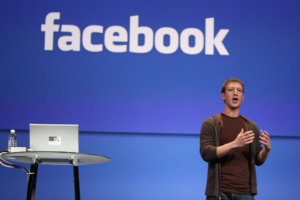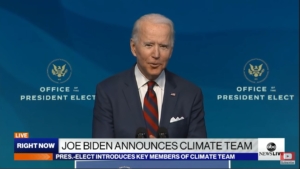Science Says, Increasing Tech-Literacy, and the Corpse Shah
Here’s What You Need To Know
Last week, the Environmental Protection Agency (EPA) published a proposed rule in the Federal Register that is “an attack on science” and a “gift to polluters.” Well, that is only if you believe the scary rhetoric used by its opponents at the start of what promises to be an intense 30-day public comment period on the controversial rule. Administrator Scott Pruitt and his handling of the EPA have been under intense scrutiny, for reasons both of policyand personality, making it difficult to evaluate proposed rule changes of consequence like this one on their merits alone. Here are the facts you need to know about the EPA’s proposed rule to “strengthen” science, which has been an issue at the forefront of the Trump era:
- Why Is The Rule Needed? According to the National Association of Scholars, there is a reproducibility crisis across a wide range of modern science and social-scientific disciplines. The findings of many influential journal articles have been unable to be reproduced, whether because of the improper use of statistics, groupthink, arbitrary research techniques, or some other flaw – a topic which should be familiar to regular readers of this newsletter. In work presented in Science in 2015, only 39% of 100 prominent psychology studies could be successfully replicated by independent researchers, suggesting that even top scientific journals suffer from this problem. This crisis poses significant challenges as policymakers propose and implement rules and regulations based on what may simply be supposed scientific findings of much consequence, which is why new standards for using findings to inform policymaking have been proposed for some time.
- What Does The Proposed Rule Actually Do? The EPA’s rule would “ensure that the regulatory science underlying Agency actions is fully transparent, and that underlying scientific information is publicly available in a manner sufficient for independent validation.” It would do so by requiring the EPA to publish all scientific data used to support studies that inform clean-air and clean-water rules, as well as forbid the use of studies that do not meet this new standard. The EPA would not be the first agency to implement guidelines to enhance the rigor, reproducibility, and transparency of science used as a basis for federal regulations. The National Institutes of Health unveiled new standards to achieve these goals during the Obama Administration.
- Why Is It Controversial? The proposed rule has been disparaged by critics as “disastrous for public health” because it could result in less science in policymaking due to the burden placed upon the government to spend time and money redacting confidential information like medical records, or disqualifying research that includes sensitive data altogether, before scientific findings are made public. Because of the perceived impact on the environment, opponents of the rule have also attacked the EPA for putting the “profits of regulated industries over the health of the American people.” However, the crux of the matter may be deeper than that: a crisis of trust. Partisans on all sides see scientific evidence from their own perspectives, and selective distrust of science will therefore never disappear, instead fueling debates on controversial regulatory proposals like this one ad infinitum. Even if you agree with the proposed rule, there may be little trust in Administrator Pruitt, whom the USA TodayEditorial Board called an “ethical train wreck,” to correctly implement it, or, conversely, you may worry about a future administrator in a Democratic administration using the rule to obviate contrarian studies that raise questions regarding the need or efficacy of new rules and regulations.
- What Happens Now? The public has until May 30th to submit their comments, and The Union Of Concerned Scientists sent a letter to the EPA urging the comment period to be extended to a minimum of 60 days with public hearings across the U.S. A group of scientific journals have also released a joint statement critical of the proposed rule, suggesting that the controversial rule will be the subject of significant comment, as well as a target of scrutiny and hyperbole, in this short period of time. Should the rule move forward, it is almost certain to face legal challenges by environmentalists concerned that it raises the bar too high for studies they believe are raising issues for the EPA to address.
On its merits, a proposed rule to ensure the reproducibility of scientific findings that inform approximately $394 billion worth of EPA regulations should be a welcome development, regardless of political persuasion. Unless, that is, scientific findings and standards are only worthy of defense when they confirm and further a political ideology, irrespective of rigor and reproducibility, which is why this reasonable sounding rule has caused such a furor.
News You Can Use
THINGS AREN’T ALWAYS AS THEY SEEM
Subscribe to Receive Insights
"*" indicates required fields
Two recent, although quite different, stories in the news illustrate the value of an information advantage when it comes to making sense of the relentless information flows in the public arena. In the former, photographer Marcio Cabral told Wildlife Photographer of the Year judges that he had spent three years returning to the Brazilian plains, waiting for the perfect moment to capture his award-winning photo of an anteater digging into a termite mound. On tips from anonymous third-parties, however, an investigation was launched into the photo, ultimately uncovering that it was a fraud – and that the anteater was stuffed!
Meanwhile, the nominee for Veterans Affairs secretary Rear Admiral Ronny Jackson withdrew his name from consideration after coming under considerable fire alleging misconduct on the job, despite his and The White House’s dispute of the allegations, some of which were shown by public records to be highly questionable to begin with. Yet, that unfortunately did not stop Democratic Senator Jon Tester from leaking the allegations against Jackson before having all of the facts.
The public arena is fast-moving, and things are not always as they seem. Whether it is a photo of an anteater or the reputation of a Rear Admiral, having an information advantage that understands vulnerabilities and what you’re up against, is key to preventing unforced errors and achieving your public affairs objectives.
ANCESTRY.CON?
After killing 12 people between 1978 and 1986, as well as committing a number of other heinous acts, 72-year-old Joseph James DeAngelo was taken into custody from his suburban middle-class home outside of Sacramento last week. DeAngelo, who authorities believe is the elusive Golden State Killer, was caught in part due to a string of DNA evidence that was recorded at several crime scenes and linked to DNA evidence contained on a consumer genealogical website like Ancestry.com, 23andme, and MyHeritage.
The consumer genealogical website significantly reduced the size of the search and the possible suspects, although the exact details surrounding how authorities used the sites remains confidential. While it is certainly a welcome development that victims’ families will receive closure and a dangerous individual is no longer loose, the use of consumer genealogical sites by law enforcement, which have already raised ethical and privacy concerns for some time, may again draw attention from regulators to examine privacy and data protections in the burgeoning genetic testing industry.
THE CORPSE SHAH
The Iranian theocracy is facing numerous threats – unemployment, economic mismanagement, pressure over its nuclear program, continued popular protests – but the latest threat may be from the mummified corpse of someone who has been dead since 1944. While renovating a Shiite shrine near the site of the former tomb of Reza Shah Pahlavi in Tehran, construction workers are believed to have uncovered the missing remains of the late king, whose son and monarchy was overthrown by the Ayatollah Khomeini and his followers in the 1979 Islamic Revolution.
The monarchy, which was at the time “widely seen as corrupt, despotic and dissolute,” is now viewed as being responsible for ambitious construction and education projects that led to the modernization of the country in the early 20th century. Regardless of whether this newfound appreciation for the monarchy is due to nostalgia, the bigotry of low expectations, or a combination of both, the Iranian regime has downplayed the story, suggesting they understand the threat to their power from a viral narrative that raises awareness of the modernizations under the monarchy in contrast with the increasingly despotic regime that took power in its place.
INCREASING TECH-LITERACY
Fact-finding is a staple for legislators responsible for policymaking, whether achieved through congressional delegation travel or public hearings. However, if some of the questions asked during Facebook CEO Mark Zuckerberg’s testimony last month before Congress showed anything, it is that many legislators would benefit from greater technological literacy, as the policies they then craft would be the product of an understanding of not only the common technologies, but also provide a framework for addressing the “foundational questions of accountability, fairness, and abuse of power” that stem from them.
Should policymakers take responsibility for gaining more foundational tech knowledge, the media may also have an integral role to play as well, because measured journalism – rather than “click bait fodder” – that raises the level of knowledge on these issues can help hasten this digitally-enhanced future, although judging from the fallout of the White House Correspondents Dinner, that may be too much to ask.



